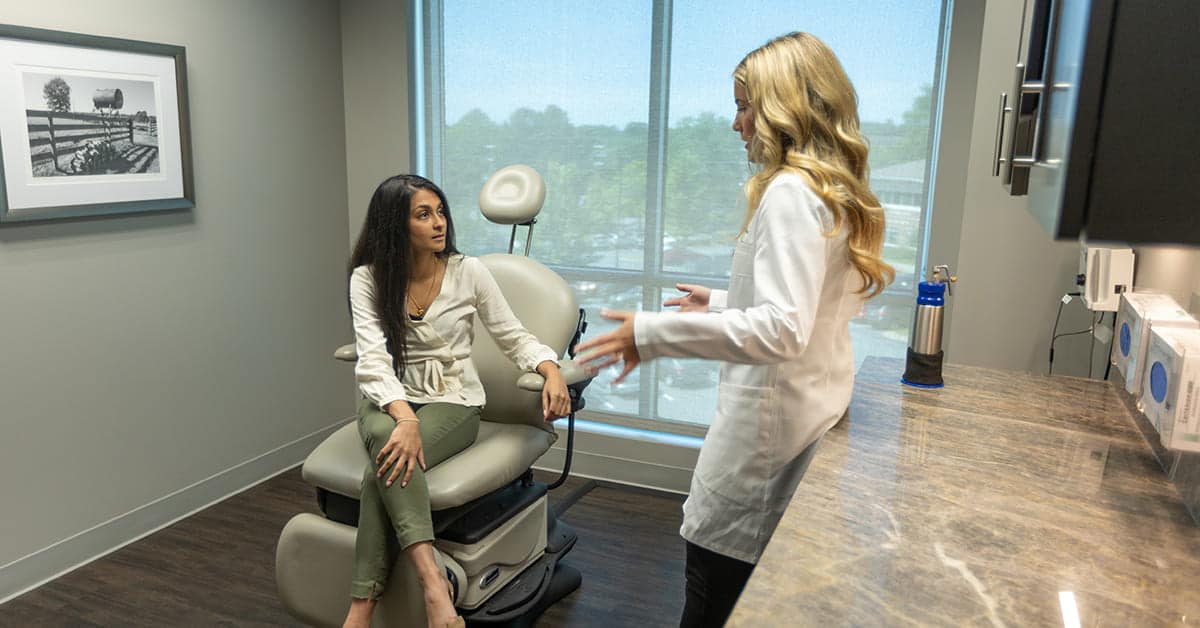Can My Seborrheic Keratosis Be Removed?

Seborrheic Keratosis Removal
Because it’s commonly benign, seborrheic keratosis doesn’t usually require treatment. However, it may be removed for cosmetic reasons, diagnostic purposes, or if it causes discomfort.
Read on to learn more about seborrheic keratosis and the most popular methods used for removing it.
What is Seborrheic Keratosis?
Seborrheic keratosis is a common skin condition most prevalent in older adults. Sometimes resembling moles or warts, these non-cancerous growths may look like they’ve been “pasted on” the skin. The growths can vary in color from tan to dark brown. They most often appear on the back or chest, though they can appear on other parts of the body.
Seborrheic keratosis is generally harmless, but the growths can cause concern due to their appearance or if they become irritated.
Who Typically Gets Seborrheic Keratosis?
Seborrheic keratosis is commonly associated with aging, making it a frequent occurrence in middle-aged and older adults. However, it’s not exclusive to any specific age group.
Here’s what might contribute to seeing these growths on your skin:
- Age. Individuals over the age of 50 are more likely to develop these growths.
- Genetics. There’s a hereditary component to seborrheic keratosis. If your family members have had these growths, your chances of developing them may be higher.
- Skin type. People with lighter skin tend to be more prone to seborrheic keratosis, although it can affect individuals of all skin types.
What Causes Seborrheic Keratosis?
While the exact cause remains unclear, several factors are thought to contribute to this skin growth development. These include:
- Genetic factors. A family history of seborrheic keratosis increases the likelihood of developing it.
- Sun exposure. Prolonged exposure to the sun is believed to be a contributing factor, particularly in people with lighter skin.
- The aging process. As our skin ages, it undergoes various changes. This is considered part of this natural aging process.
- Hormonal changes. Some research suggests that hormonal changes might influence the development of these growths.
It’s important to note that seborrheic keratosis is not caused by any skin damage, infections, or lifestyle factors like diet or hygiene. The growths are simply a common skin occurrence.
When Should I Be Concerned?
Seborrheic keratosis is generally benign. However, it’s always important to be vigilant about any changes in your skin.
Here are some signs that warrant a closer look and possibly a consultation with a healthcare professional:
- Rapid changes in appearance. If a growth changes quickly in size, shape, or color, it’s advisable to get it checked out.
- Multiplication and spread. A sudden increase in the number of growths or a rapid spread to new areas of the body can be a cause for concern.
- Irritation and discomfort. While some itching or slight irritation might be normal, persistent discomfort, pain, or sensitivity in the area of the growth should be evaluated.
- Bleeding or oozing. If a growth starts to bleed, seep, or ooze without any apparent cause, such as scratching or injury, it’s important to see a doctor.
- Resemblance to other skin conditions. Seborrheic keratosis can sometimes mimic the appearance of warts, moles, or even skin cancer. Any growths that resemble these conditions—especially if they have irregular borders, uneven coloring, or an unusual texture—should be examined by a healthcare professional.
It’s always better to err on the side of caution when it comes to skin changes. Regular self-examination and dermatological checkups are key practices in maintaining skin health and catching potential issues early.
Removing Growths
Because it’s typically benign, seborrheic keratosis doesn’t usually require removal unless it’s for cosmetic reasons, discomfort, or diagnostic purposes. Here are some common methods of removal:
- Cryotherapy involves freezing the growth with liquid nitrogen, causing it to fall off within days or weeks. It’s a preferred choice when there’s no need for a biopsy. You may notice skin depigmentation at the treatment site after undergoing the procedure.
- Electrodesiccation and curettage combines burning the growth with an electric current and scraping it away with a curette. (These techniques can also be used separately.) This method requires some wound care afterward.
- When a biopsy is needed, shave excision is often used. The healthcare provider numbs the area and shaves off the growth, then sends the sample for lab analysis. This method also smooths the skin underneath.
Ask Franks Dermatology About Your Seborrheic Keratosis
While seborrheic keratosis is usually a benign and common skin condition, it’s important to stay proactive about your skin health. If you are concerned about any skin conditions, schedule a consultation with the experts at Franks Dermatology by calling (501) 246-1042. We can provide you with options that fit your needs, whether that’s a cosmetic removal of a growth, an official diagnosis, or further testing such as a biopsy.
